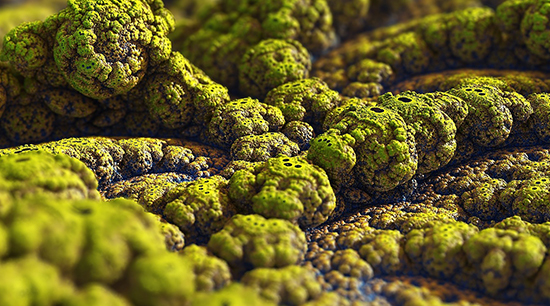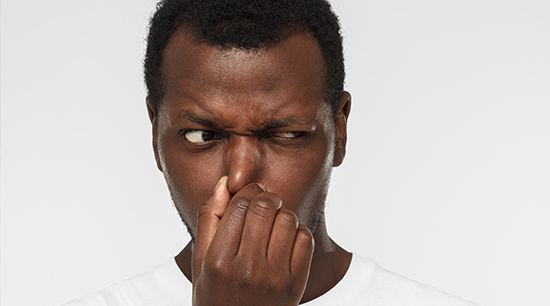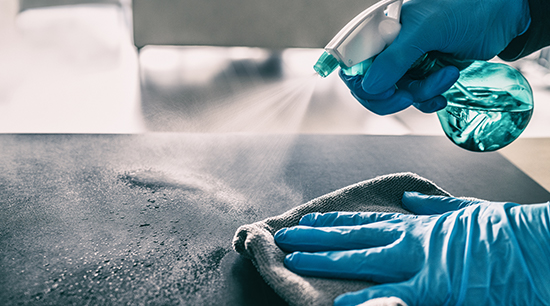Avoid potential respiratory illness and the embarrassment of a moldy-smelling home. Knowing how mold forms and how to remove it will help you keep your living space smelling fresh and clean.

alpharettawaterdamageremoval.com gathered the following information on what mold smells like, how it grows, its health implications, and how to remove it and its odor.
How to Get Rid of Mold Smell
Once you have killed or removed the existing mold in your home (see below), half of the job is done. To completely remove mold odors and keep your house smelling fresh, consider the following:
- Open windows regularly to get rid of stale air and bring fresh air into the space
- Run a dehumidifier to remove excess moisture from the air
- Keep air circulating with box and ceiling fans
- Decorate your home with houseplants that naturally filter the air
- Dust and vacuum regularly and thoroughly
Note: If you still have mold growing in your home, this may temporarily lighten the embarrassing mold odor, but will not get rid of it.
What Does Mold Smell Like?

Some volatile compounds produced by molds have strong smells and are quickly released into the air. These compounds are called; microbial volatile organic compounds (mVOCs). Because mVOCs often have unpleasant odors, they can be the source of the “moldy or musty odor” frequently associated with mold growth. A moldy odor suggests mold is growing in your home and should be immediately investigated.
How Does Mold Grow?
Mold growths, or colonies, can grow on a damp surface in 24 to 48 hours. These colonies reproduce by spores that effortlessly travel through the air. Molds digest organic material, destroying the material they grow on and spreading to adjacent organic material.
Is Mold Dangerous to Humans?
Mold can exacerbate grave long-term health problems for humans. When you are continuously exposed to mold in your home or business, you are likely infected and risk getting sick.
Mold infections can be severe and often require lengthy treatments that are not always successful. If you suspect that you are sick from mold exposure, seek immediate medical attention.
For those sensitive to molds, exposure may lead to any of the following symptoms or a combination of them:
- Wheezing
- Stuffy Nose
- Shortness of Breath
- Tightening of the Chest
- Fever
Black mold (Stachybotrys) poisoning can be attributed to several diseases. The primary infection venues are breaks in the skin and inhalation.
So the clear answer to the question, Is Mold Dangerous to Humans?, is a resounding YES!
How to Remove Mold
Some safe and effective products you can use to kill mold are baking soda, vinegar, Tea tree oil, hydrogen peroxide, and detergent. If you choose vinegar, put it in a generic spray bottle (no need to add water). Spray vinegar on the affected surface and leave it for an hour. Consider the following mold removal steps:
- Seal the room to be cleaned from the rest of the house
- Cover the doorway with a barrier made from overlapping plastic sheeting and tape it to the walls and floor
- Cover all air ducts in the room
- Moisten and bag moldy materials
If you have to open the wall to reach the mold growing inside, don’t hesitate to cut the drywall beyond the apparent damage to find all the mold and let the wall dry out.
If you have to remove mold concentrations or perform black mold removal covering more than a few square feet, it is recommended you take these precautions:
- Wear old clothes and shoes that you can launder or dispose of after the cleanup/removal work
- Wear an N-95 or P-100 respirator in addition to goggles and gloves
- Set a box fan in a window to ventilate the room while working. Tape plywood or cardboard around the window openings so mold spores can’t blow back in
- Roll up, wrap, and tape moldy carpeting in 6-mm plastic, and double-bag mold-infested debris in garbage bags for immediate disposal
- Moisten moldy areas with a sprayer while you work
- Turn off your HVAC and cover ventilation ducts and doors to contain spores
- Keep your wet/dry vacuum outside when you vacuum (you may need to purchase an extended hose)
For more information on proper use of Personal Protective Equipment (PPE), visit epa.gov/mold/mold-course-chapter-6
Mold Prevention
To naturally prevent mold from growing in your home, wipe/dry damp surfaces frequently, run a dehumidifier (or try these DIY solutions), spray vinegar onto damp surfaces like showers when you’re finished, and be mindful of leaks. Consider the following:

1 – Keep humidity levels in your home low, no higher than 50%. An air conditioner or dehumidifier will help you keep it low. Humidity levels change over the course of a day, so you will need to check humidity levels often.
2 – Fix all leaks in your roof, walls, or plumbing, so mold has no moisture source.
3 – Be sure the air in your home circulates freely. Use exhaust fans that vent outside the structure in the kitchen and bathroom(s). Make sure your dryer also vents outside.
4 – Vigorously clean and dry your home within 24 to 48 hours after a flood (Hire a professional if the damage is too extensive for you to handle on your own).
5 – Remove carpeting and upholstery that have been soaked and cannot be immediately dried. Consider using wood, vinyl, or tile in bathrooms, kitchens, and basements.
Read more about handling mold in carpets.
Eliminating Mold Odors
In this article, you discovered what mold smells like, how it grows, potential human health problems, how to remove it, and how to eliminate mold odors from your home.
Knowing what causes mold, how it grows, and how to eliminate it will help you maintain a fresh and healthy-smelling home.
Ignoring mold in your home can lead to severe respiratory illness and an embarrassing odor that will certainly deter visitors and persistently linger.
Sources:
epa.gov/mold/what-does-mold-smell
cdc.gov/mold/control_mold.htm
fema.gov/pdf/rebuild/recover/fema_mold_brochure_english.pdf
extension.umn.edu/moisture-and-mold-indoors/dealing-and-preventing-mold-your-home
(678) 505-0266